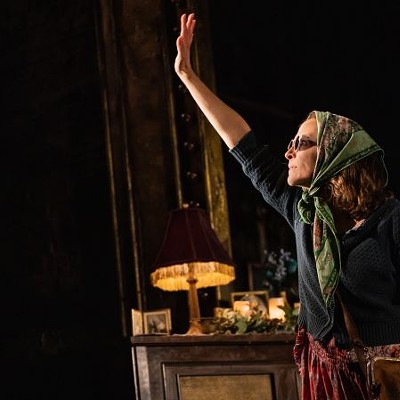"Urban Cowboy" was released in 1980, and quickly became a hit, giving Pasadena and Houston a brief turn under the Hollywood spotlight, and changing Gilley's in the process. Andy Warhol and other celebrities flew in for the premiere, bringing a new kind of attention to the area.
The film is a time capsule that captures an interesting period in the area's history, and feels like it documents many changes in our culture, both locally and nationally. Gilley's is almost a character in the film itself, being the primary location where most of the action takes place, and introducing America to things like mechanical bulls, which play a major role in the film's plot, as well as "The Cotteneye Joe," which was briefly a dance fad. John Travolta gives a convincing performance as Bud, and was a superstar at the time, coming off of hit films like "Saturday Night Fever" and "Grease," so "Urban Cowboy" had a lot of influence nationally. Country music was also changing, with outlaw country ceding way to a much more smooth pop style, and the soundtrack album from Urban Cowboy spawned numerous hits such as
And for awhile, "Urban Cowboy" made hanging out at places like Gilley's cool to a newer kind of crowd. A majority of the club's earlier regulars, many of which ended up in the film, moved on, displaced by upscale invaders brought in by a new trendiness for honky tonks the film had created. Paul Wagner remembers not enjoying the changes that "Urban Cowboy" brought on when it was released.
"Most of the people who used to hang out at clubs like Gilley's were like me, working class folks just looking for a place to hang out and drink a few beers. After the movie came out, things were just different, and not just at Gilley's. The people changed, and a lot of us just quit going out like we used to."
For better or for worse, Gilley's Pasadena location trudged on for a few more years, while a bust in the oil industry brought a downward turn for the Houston area and Pasadena's refineries. In the late '80s, a contentious feud between Mickey Gilley and Sherwood Cryer led to the club being closed, before it was gutted by an intentionally set fire in 1990, bringing an effective end to an era of urban cowboys and mechanical bulls.
Texas history is sprinkled with tales of certain locations which reach a sort of legendary status. The famous Chicken Ranch brothel in La Grange is one of those places, and Gilley's Club in Pasadena is another, both forever enshrined by Hollywood films featuring a part of their story.
There have been recent rumors that Mickey Gilley will reopen some version of his world famous nightclub in Pasadena, but whether or not that will happen isn't certain. What is certain is that the Houston area has changed enormously over the 35 years that have passed since "Urban Cowboy" captured a colorful slice of local life, and it's impossible to go back in time again. But that's what movies are for. They freeze a moment in time forever, and in the case of Gilley's Club and "Urban Cowboy," that's a very interesting moment of local history.





